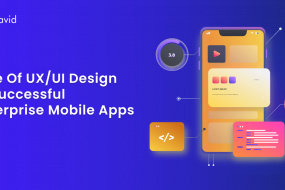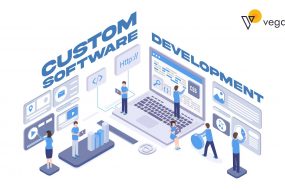
In today’s world, you can only imagine a project with third-party integrations since APIs have changed how web apps are built.
Business organizations of all types and domains rely on web and mobile solutions to grow. As a result, the need to optimize the development process evolves as the number of software products increases.
APIs help programmers accelerate the development process, improve security, and get access to ready-made features without developing them themselves.
The United States is home to some of the world’s top website development agencies. These firms specialize in designing and developing custom websites and web applications for businesses of all sizes.
To integrate third-party services into your web application, you must partner with a team of experienced developers who can do the job correctly.
What is an API?
Application Programming Interface consists of protocols and tools for building software applications. APIs allow developers to access and use certain functions in another application without building them from scratch. Reusing existing code and already-built functions helps developers save time and money. Additionally, APIs can facilitate communication between applications and platforms, allowing for data sharing and manipulation.
What are third-party APIs?
“Third-party integration” refers to acquiring necessary external data for an ongoing project using various APIs (application programming interfaces). Third-party APIs are made available by independent parties—typically businesses like Facebook, Twitter, or Google—so you can use their functionality on your website.
Because of third-party APIs, developers can create new solutions faster by using pre-existing components rather than starting from scratch with new ones.
For instance, the most obvious illustration is mapping APIs to show personalized maps on your pages. In another instance, let’s say you want to create an application for online shopping, and you should include a chat feature in it. Therefore, the developers can incorporate an existing API into your application rather than creating a new chat interface.
Why is third-party API integration important for your business?
This illustration serves to illustrate the significance of third-party app integration. Every company has a sales department, always looking for new leads. Your website is a portal for potential new customers. However, there is a missed opportunity as long as your website and the sales flow are separate. Consider how your company website would function if a CRM tool, such as Hubspot Marketplace or Salesforce, were integrated. When website visitors submit a contact form, their data is immediately entered into the sales CRM, and the “hot” lead is assigned to a sales team member. This is an excellent example of incorporating a third-party application with a website.
Third-party API integration is a powerful tool for businesses to access new technologies and services that can help them improve their products, services, and customer experience. By integrating third-party APIs into their systems, businesses can access data and capabilities that would otherwise be difficult or impossible to obtain.
How Does Third-Party API Integration Benefit Developers and Software Companies?
By leveraging a third-party API, developers can easily access a wide range of features and functions to enhance the user experience for their apps or websites. This not only allows them to develop more sophisticated applications but also reduces the amount of time it takes to complete development projects. In addition, software companies can take advantage of APIs provided by Magento development companies to quickly and efficiently integrate their e-commerce platforms into existing applications.
What Are Some Examples of Popular APIs?
There are plenty of options for integrating third-party services into a web application. Popular services include Stripe, PayPal, Twilio, Salesforce, and MailChimp, to name a few.
Stripe is a payment processor for businesses of all sizes. It enables businesses to accept customer payments, receive payments, and set up recurring billing systems. It is similar in that it allows for payments but is more commonly used for receiving payments.
Twilio is a communications service that lets businesses create cloud-based messaging and phone solutions.
Salesforce is a customer relationship management tool that helps businesses keep track of their customers.
MailChimp is an email marketing service that makes managing newsletters and email campaigns easy.
Lead generation Third-party app integration
You can create tailored landing pages, surveys, and lead forms with lead generation tools integrated with your website. They have a straightforward drag-and-drop graphic user interface, or GUI, and do not require development work. A popular website integration tool is Hubspot Marketplace. Although not all businesses need a comprehensive marketing CRM, other cost-effective options are also available. Integrations like these will help you manage lead pipelines, digital and email marketing, and sales.
Payment Gateway third-party app integration
A payment gateway integrated into your website functions as an intermediary to facilitate transactions between customers and merchants, much like brick-and-mortar stores that accept digital payments. It uses security protocols and encryption to ensure the security of payment information.
After completing the transaction through a credit card, Google Pay, or Internet banking, a customer is redirected back to the merchant’s website after completing the transaction on the third-party payment gateway.
GPS and Location Third-party app integration
The website’s location maps are a sign of a legitimate company. Local businesses may want customers to find their physical locations easily. Most companies should incorporate Google Maps into their websites because it gives an instant business overview.
How do you integrate them into your web application?
While integrating third-party services into your web application, one must remember that different services may have additional requirements and require different coding styles.
The first step is to create APIs (application programming interfaces) capable of communicating with the third-party service. The API should be designed to send and receive data and authenticate users. Then, the API should be integrated into your web application’s backend code. Depending on the language and framework you’re using, this can be a time-consuming process. The final step is to implement the API in the front-end code. This involves writing the JavaScript and HTML required to display the data received from the API call.
Conclusion
Integrating third-party services into your web application significantly adds features, scalability, and security. Integrating these services into your web application can take some time, but the benefits outweigh the cost. Research the various services and understand any associated costs before incorporating them into your web application.











